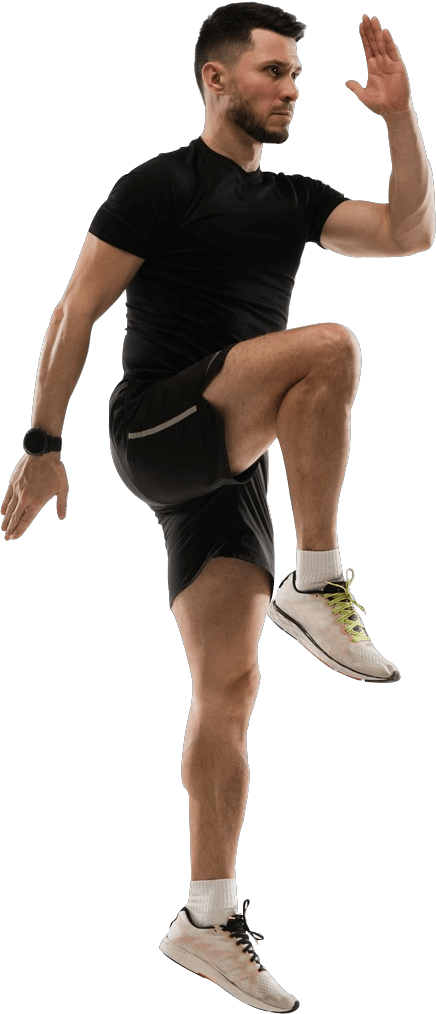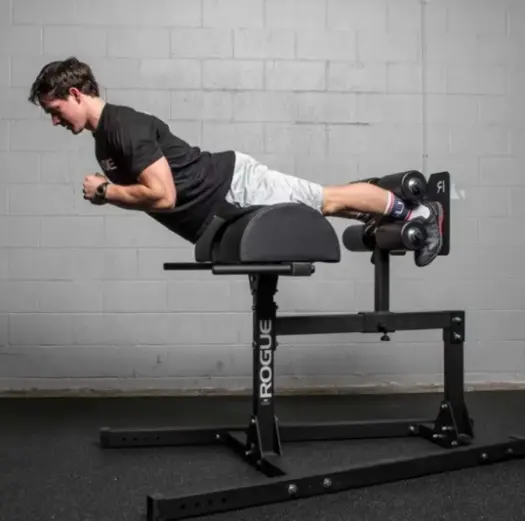
Have you ever dreamed of achieving sculpted, powerful glutes and strong, functional hamstrings?
Well, the secret lies in a dynamic exercise that might just become your new fitness obsession – the Glute Hamstring Raise!
This exercise is like a hidden treasure in the world of fitness, waiting for you to unlock its incredible benefits. Whether you’re a seasoned fitness enthusiast or just starting your journey, the glute hamstring raise is a game-changer you won’t want to miss.
6 steps to performing the ideal glute hamstring raise
Set Up: Position yourself on a glute-ham developer machine, securing your ankles beneath the ankle pads making sure that your upper thighs should rest comfortably on the thigh pads.
Starting Position: Begin with your body straight, core engaged, and hands either crossed on your chest or placed behind your head.
Lowering Phase: Slowly lower your upper body towards the ground while maintaining control. Moreover, your hips should hinge at the edge of the pad, and your torso should be close to parallel with the floor.
Raising Phase: Engage your hamstrings and glutes to lift your upper body back to the starting position. Keep the movement controlled and avoid using momentum.
Full Contraction: At the top of the movement, squeeze your glutes and hamstrings to achieve a full contraction. Furthermore, your body should be in a straight line from head to heels(arrow).
Lower Slowly: Gradually lower your body back down with control, returning to the lowered position.
Golden tips
- Ensure your hips remain stationary throughout the exercise.
- Keep your core engaged to maintain a straight body line.
- Focus on the mind-muscle connection, emphasizing the use of your glutes and hamstrings.
- Avoid using momentum or swinging your body to complete the movement.
- Start with a comfortable range of motion and gradually increase it as you become more proficient.
- Breathe in when working with gravity and vice versa
Related: How to do the perfect bench press
Glute hamstring raise muscle worked
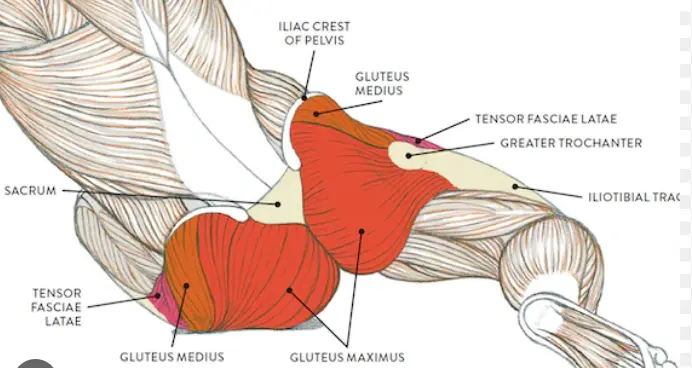
Hamstrings: These muscles, located on the back of your thighs, are responsible for bending your knees and extending your hips. Glute Hamstring Raises place a significant emphasis on the hamstrings, helping to strengthen and define them.
Glutes (Gluteal Muscles): The glutes consist of three main muscles: the gluteus maximus, gluteus medius, and gluteus minimus(fancy names eh?). Moreover, they are responsible for hip extension, which is a key movement in Glute Hamstring Raises.
Erector Spinae: This group of muscles runs alongside your spine, helps with the extension of the back and plays a stabilizing role during Glute Hamstring Raises.
Calves (Gastrocnemius and Soleus): While not the primary focus, the calf muscles also play a supporting role in stabilizing your lower leg during the exercise. For your information, get ready for the calf soreness
Core Muscles: Your core muscles, including the abdominals and obliques, help stabilize your body during the movement, maintaining proper posture.
Common errors in glute hamstring raises

Here are 9 common errors
Arching the Back: Arching the lower back excessively can strain the lumbar spine. Therefore, keep your core engaged and maintain a neutral spine throughout the movement.
Lack of Core Engagement: Neglecting to engage your core can lead to instability and improper form, you need to maintain a strong core to support your body during the exercise.
Inadequate Range of Motion: Failing to perform a full range of motion by not lowering the body far enough or not fully extending at the top can limit the exercise’s benefits. To solve this, work on gradually increasing your range of motion as your strength improves.
Rounding Shoulders: Allowing your shoulders to round(I did this at the start lol) forward can compromise your posture and reduce the effectiveness of the movement hence, keep your shoulders back and chest open.
Incorrect Foot Position: Placing your feet too far forward or backwards on the footplate can affect the angle of your body during the exercise. Moreover, position your feet so that your body forms a straight line from head to heels.
Not Controlling the Descent: Quickly dropping the upper body during the lowering phase can lead to loss of control, strain on the muscles and people staring at you(awkward silence). So, do a favour to yourself and Lower your body slowly and with control.
Hyperextending the Hips: Overarching the hips at the top of the movement can lead to excessive stress on the lower back. Therefore, focus on achieving a straight line from head to heels without overextending.
Not Using Mind-Muscle Connection(very important): Failing to focus on the muscles being worked (hamstrings and glutes) can result in ineffective execution. Concentrate on engaging these muscles throughout the exercise because everything is not a bicep exercise
Neglecting Proper Breathing: Inconsistent or improper breathing can affect your stability and performance.
Related: How to do a LAT pulldown
How to perform Glute Ham Raises at home without a machine
Nordic Hamstring Curl:
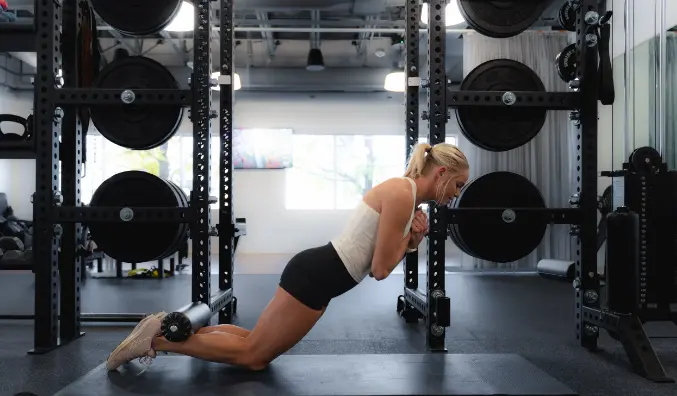
Kneel on a soft surface with your ankles secured under a sturdy object or have a partner hold them down.
Slowly lower your upper body forward while keeping your core engaged and maintaining a straight line from head to heels.
Use your hamstrings to control your descent until you’re nearly parallel to the ground.
Push off the ground with your hands and return to the starting position.
This exercise mimics the movement of a glute hamstring raise and can be progressively made more challenging as you become stronger.
Slider Hamstring Curls:
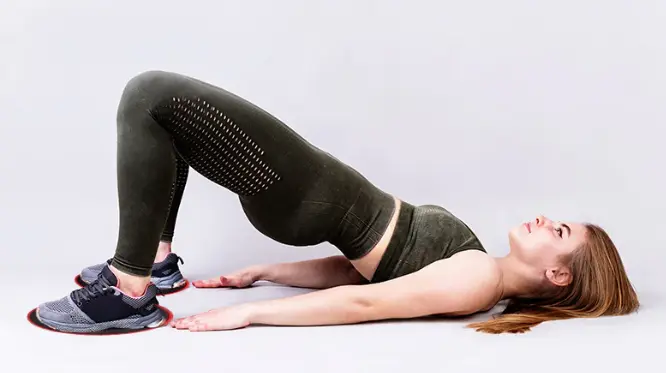
Lie on your back with your feet on sliders or a towel placed on a smooth surface.
Lift your hips off the ground to create a straight line from shoulders to heels.
Slide your feet away from your body, extending your legs and engaging your hamstrings.
Use your hamstrings to pull your feet back toward your hips, bending your knees and curling the sliders in.
Continue sliding in and out while maintaining proper form.
Romanian Deadlifts (RDLs):
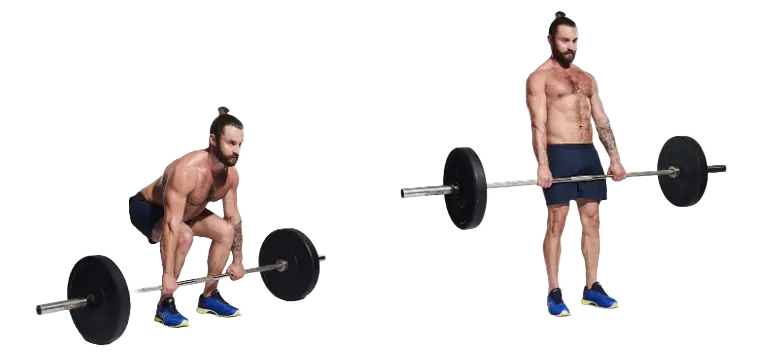
Hold a barbell or dumbbells in front of your thighs with an overhand grip.
Hinge at your hips, pushing your hips back and keeping your back straight as you lower the weights toward the ground.
Lower the weights until you feel a stretch in your hamstrings while maintaining a slight bend in your knees.
Engage your glutes and hamstrings to return to the starting position.
Single-Leg Romanian Deadlifts:
Hold a dumbbell or kettlebell in one hand.
Lift one leg behind you while simultaneously lowering the weight toward the ground.
Maintain a straight line from head to lifted heel, and let your hips naturally hinge backwards.
Use your hamstrings and glutes to return to the upright position.
Glute Bridge Variations:
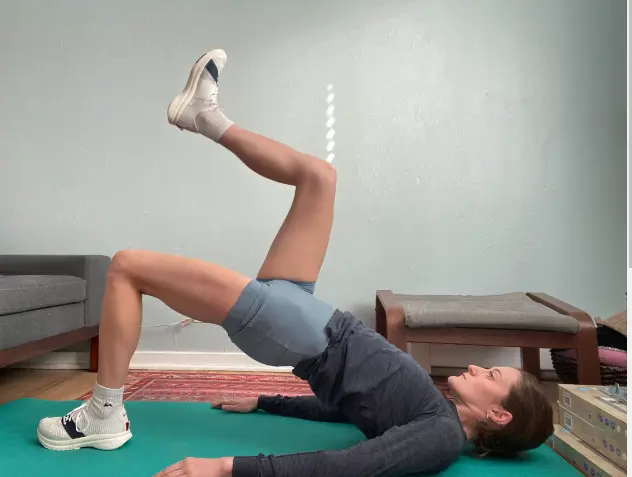
Lie on your back with your knees bent and feet flat on the ground.
Lift your hips off the ground, creating a straight line from shoulders to knees.
For extra hamstring engagement, elevate your feet on an elevated surface while performing the glute bridge.
Related: Best back exercises
Glute hamstring raise benefits
Here are 6 key benefits
Strengthened Hamstrings: Glute Hamstring Raises specifically target the hamstrings, helping to build strength and muscle definition in these crucial muscles at the back of your thighs.
Improved Glute Development: As the name suggests, Glute Hamstring Raises also engage the gluteal muscles, contributing to a firmer, more sculpted rear end.
Enhanced Posterior Chain Strength: Glute Hamstring Raises strengthen the entire posterior chain, which includes the hamstrings, glutes, lower back, and even the calves. Moreover, a well-developed posterior chain is essential for athletic performance, balance, and overall functional strength.
Injury Prevention: Strengthening the hamstrings and glutes can help prevent injuries, particularly in the knees and lower back. Furthermore, a balanced and strong posterior chain provides better stability and support for the entire body.
Better Athletic Performance: A strong posterior chain is crucial for athletic movements like sprinting, jumping, and change of direction as the Glute Hamstring Raises can improve explosiveness, acceleration, and overall sports performance.
Improved Core Activation: To maintain proper form during Glute Hamstring Raises, you need to engage your core muscles. This exercise contributes to a stronger core, which is essential for overall stability and balance.
Enhanced Muscle Activation: Glute Hamstring Raises create a mind-muscle connection that targets specific muscle groups. Hence, this activation can lead to better muscle engagement and growth over time.
Variety in Training: Including Glute Hamstring Raises in your routine adds variety to your workouts, preventing monotony and promoting well-rounded muscle development.
Whether you’re an athlete seeking improved performance or someone looking to build strength and stability, Glute Hamstring Raises offer a versatile and effective way to enhance your lower body fitness.
Related
Perfect butterfly chest exercise
Glute ham raise vs. Nordic curl
Glute Ham Raises:
1. Glute Ham Raises effectively engage the hamstrings, glutes, and lower back muscles.
2. Builds a strong posterior chain, enhancing overall lower body strength and stability.
3. Improves explosiveness and agility, crucial for sports and dynamic activities.
4. Strengthens hamstrings and glutes, reducing the risk of injuries, especially in the knees and lower back.
Nordic Curls:
1. Nordic Curls specifically target the hamstrings, leading to enhanced hamstring strength and definition.
2. Requires strong eccentric control during the lowering phase, contributing to muscle endurance.
3. This can be performed with minimal equipment, making it accessible for various fitness levels.
4. Provides room for progression by adjusting the range of motion and gradually increasing difficulty.
Both exercises offer unique benefits, with Glute Ham Raises emphasizing multiple muscles and overall performance, while Nordic Curls concentrate on intense hamstring engagement and eccentric control.
Related: Best biceps exercises
FAQS
Does glute raises work hamstrings?
Yes, glute raises, also known as Glute Hamstring Raises, effectively target and work the hamstrings along with other muscles like the glutes and lower back.
Is the glute-ham raise good or bad?
The glute-ham raise is generally considered a beneficial exercise for building hamstring and glute strength, improving athletic performance, and preventing injuries when performed with proper form.
What is a glute-ham raise?
A glute-ham raise is an exercise that involves bending at the hips while keeping the core engaged and lowering the upper body toward the ground. It focuses on the hamstrings, glutes, and lower back, often performed on a specialized machine or using alternative techniques.
What are the benefits of the glute-ham raise?
The glute-ham raise offers benefits such as strengthened hamstrings and glutes, improved posterior chain strength, enhanced athletic performance, injury prevention, and better core activation.
Are glute-ham raises better than leg curls?
Glute-ham raises and leg curls target similar muscle groups, but glute-ham raises provide additional benefits by engaging the glutes, lower back, and core. The choice depends on individual goals and preferences.
Is the glute-ham raise better than the deadlift?
The glute-ham raise and deadlift are distinct exercises that serve different purposes. Glute-ham raises emphasize hamstring and glute isolation, while deadlifts engage multiple muscle groups, making them suitable for overall strength development and functional movements. The effectiveness depends on your fitness goals.
Related: Best stability ball exercises
Conclusion
To conclude, I would say that you shouldn’t be like those people who miss leg days which is absolutely unacceptable. Therefore, we strongly recommend you do regular leg workouts especially the glute hamstring raises, the king of all leg exercises. SO GET UP AND GET GOING!!
About me

Hi, I am Abdullah, a guy whose passion for fitness led to his bachelor’s degree in exercise science, for me what started as a personal fascination soon transformed into a professional career. Over the last six years, I have had the privilege of guiding and supporting numerous individuals on their own fitness journeys. Whether they were beginners taking their first steps into the gym or seasoned athletes aiming to break their personal records, I have been there every step of the way, providing personalized training programs tailored to their unique needs and goals.

